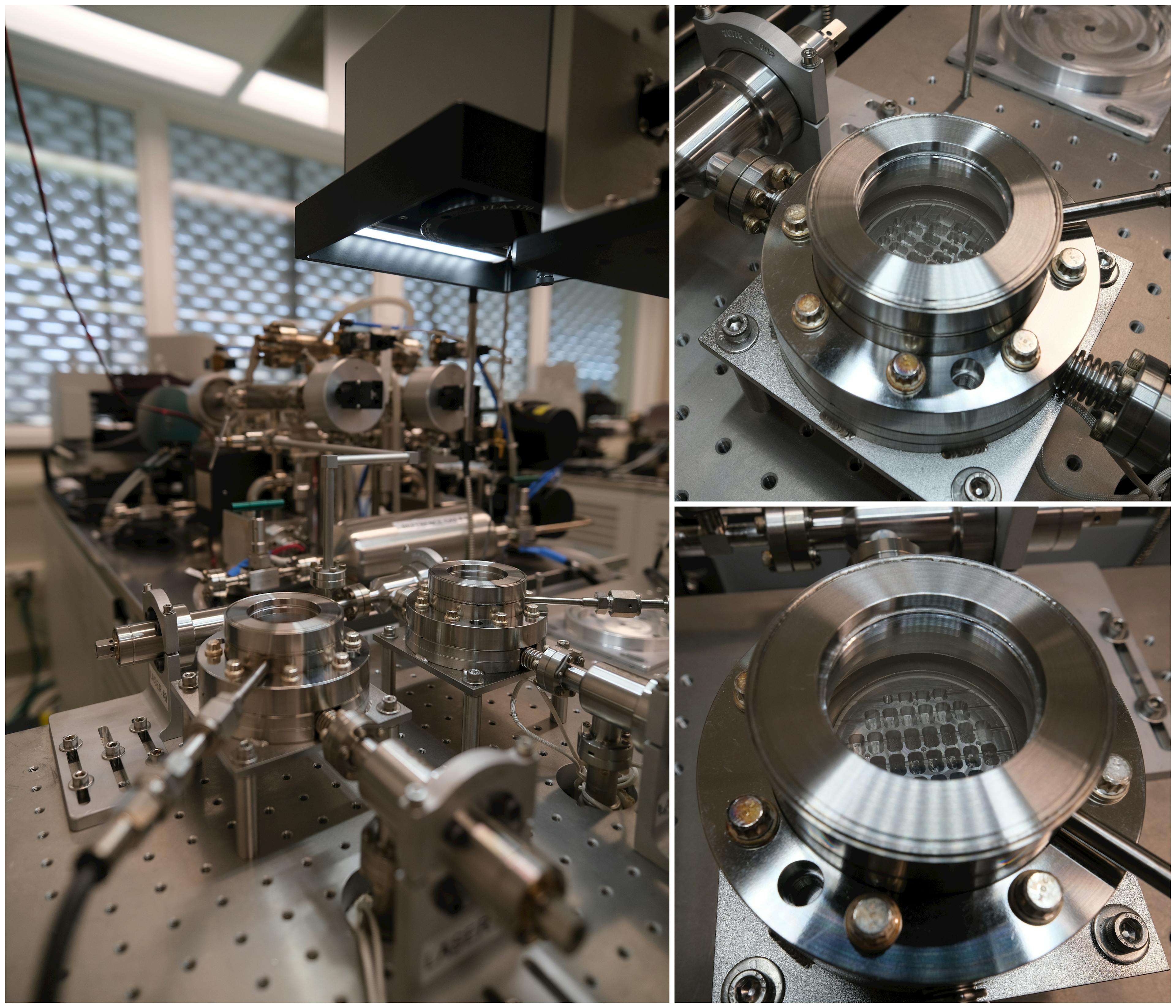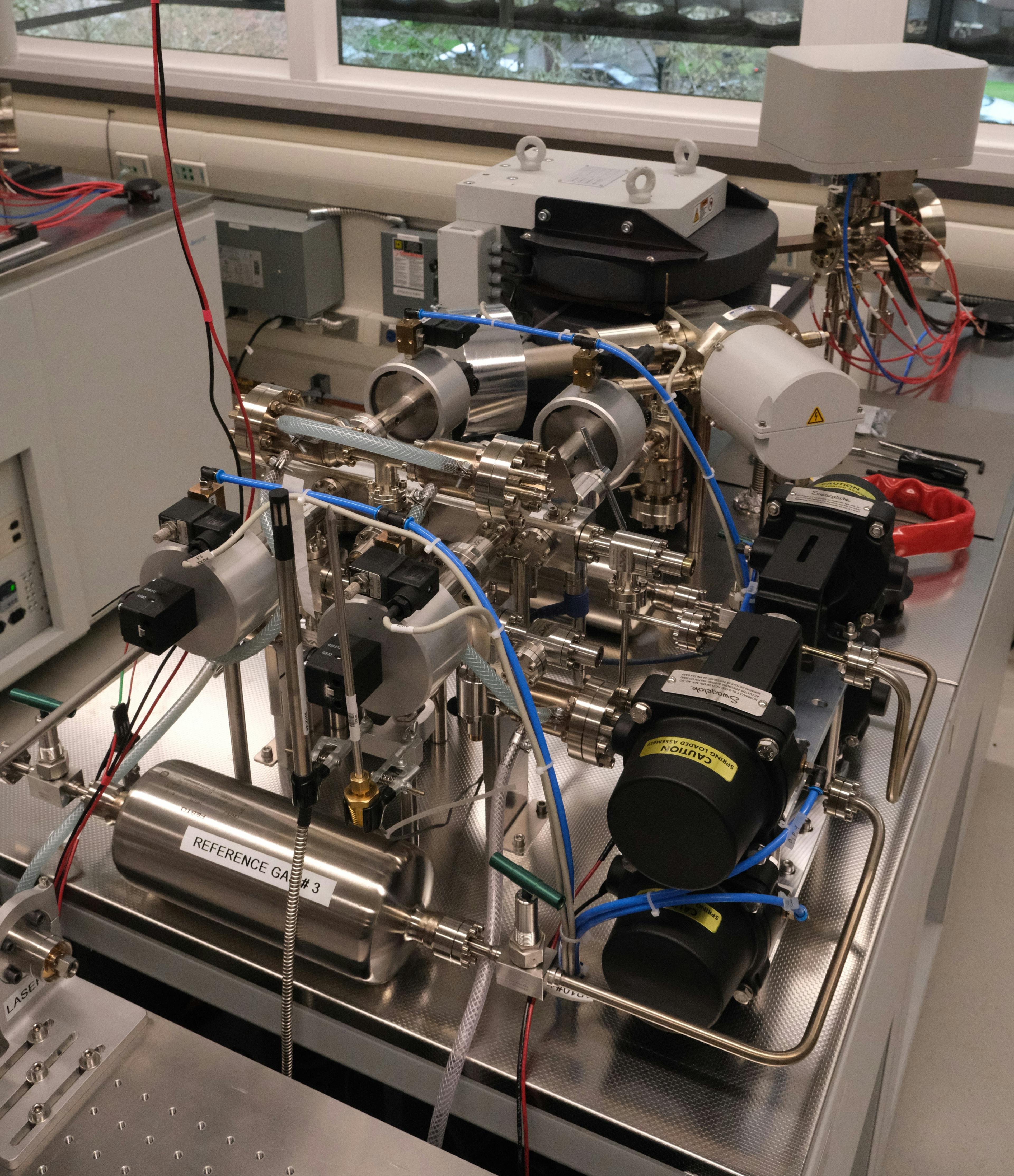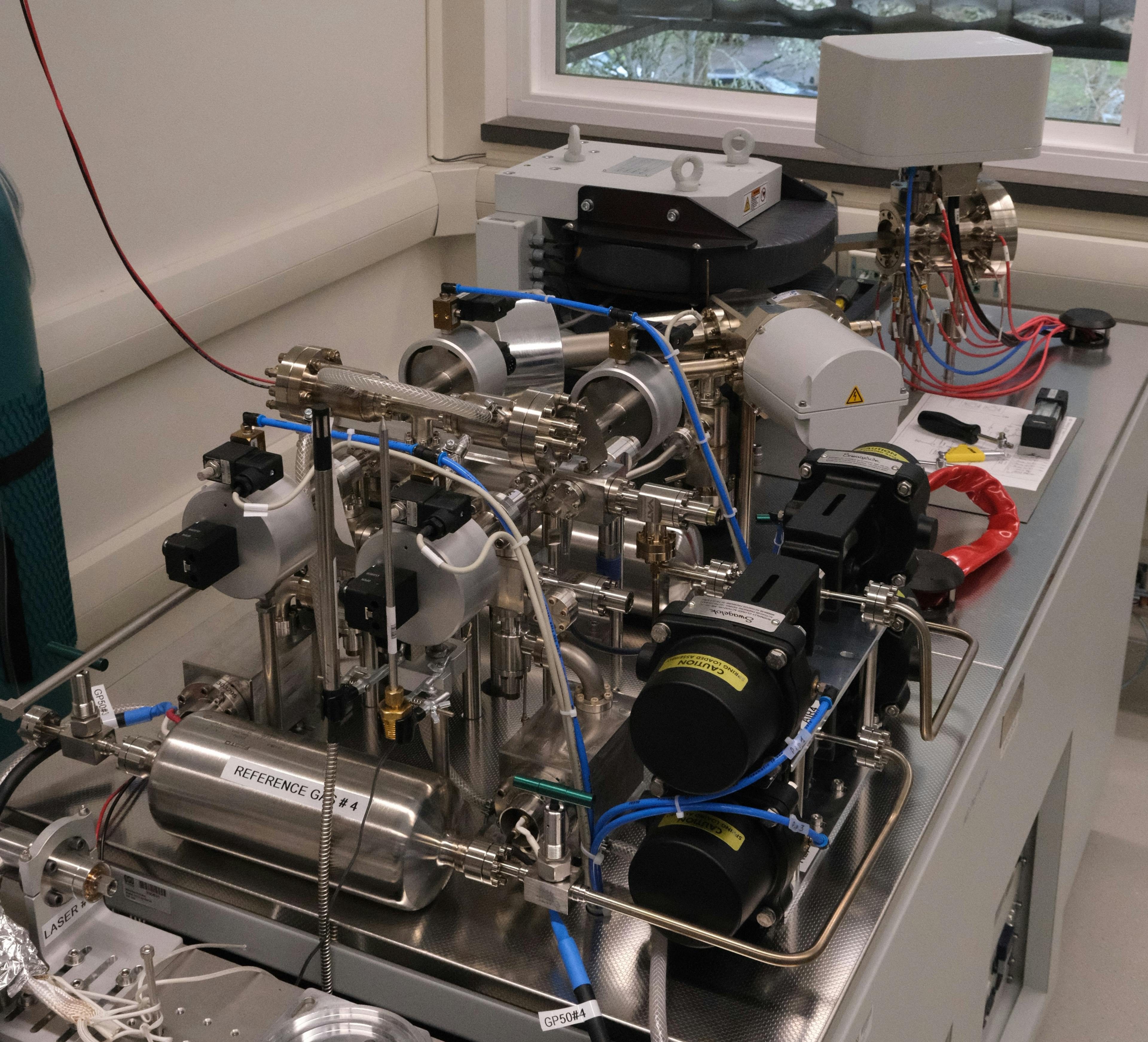Instrumentation Setup
Our laboratory is equipped with two noble gas mass spectrometers for carrying out 40Ar/39Ar age determinations. We have two Thermo Scientific ARGUS VI multi-collector mass spectrometers with five fixed Faraday detectors and one ion-counting CuBe electron multiplier.
ARGUS-VI Layout
ARGUS VI Multi-collector Mass Spectrometers
Our two instruments are Thermo Scientific Model ARGUS VI multi-collector mass spectrometers with five fixed Faraday detectors (including amplifier circuits with 1013 Ohm resistors) and one ion-counting CuBe electron multiplier mounted next to the low mass 36 Faraday detector. These systems are equipped with a 30 W Synrad Firestar v30 CO2 laser with industrial scan head for carrying out gas extractions. The ARGUS VI can be operated in three different modes:
- Multi-collector Mode to simultaneously collect all masses m/e = 36, 37, 38, 39 and 40 on the 1012 Ohm Faraday collector array for samples providing sufficient amounts of gas for analyses
- Peak-switching Ion-counting Mode using the CuBe electron multiplier for high-precision analyses on (very) small gas fractions
- Combination Mode whereby all masses will be measured simultaneously in a multi-collector mode, but with mass m/e = 36 aimed on the CuBe electron multiplier and masses m/e = 37, 38, 39 and 40 on the adjacent Faraday cups
The latter configuration provides the advantages of running in a full multi-collector mode while measuring the lowest peak (on mass 36) on the highly sensitive electron multiplier. Even though the ARGUS VI has a fixed-position collector array, an electronic steering plate placed before every collector allows for nudging over the beams to fall exactly in the middle of all five collectors. In addition, in both multi-collector Faraday modes we would have the option to use 1011 Ohm resistors with a very low baseline noise of ~2×10-17 A or higher 1013 Ohm resistors that are more sensitive, when these come on the market.

Each mass spectrometer is has two laser trays allowing for quick switching.
Customized NG Prep System Extraction Lines
The custom-made extraction lines feature two laser chambers, an open port for later attachment of a low-volume resistance furnace with an automated sample carousel, three SAES getters, and two air pipette systems (one for air and one for an 38Ar spiked air standard).
Custom-made extraction line connected to a Thermo NG Prep Bench.
ARGUS-VI-F (low volume)
The ARGUS VI is connected to an all-metal extraction system for 40Ar/39Ar age determinations. It has an overall lower volume (~500 cc) than our MAP 215-50 system but we use a similar set of getters for cleaning up the reactive gasses with one SAES ST-101 Zr-Al getter (450 °C) and two SAES ST-172 Zr-V-Fe getters (21 °C and 250 °C). Beside its lower volume, the design of the CO2 laser system is also different by using an industrial Synrad XY scan head for steering the laser beam during sample heating. This allows us to carry out the sample heating by setting up a beam raster pattern while keeping the sample housing stationary. Using this novel technique we can produce a laser beam that can move continuously up and down at speeds up to 300 in/s and that results in an even heating of the entire sample being analyzed, a prerequisite for carrying out first-rate incremental heating experiments. This laser system will be equipped with an air-cooled Synrad 25W CO2 laser that has a maximum laser power sufficient for the fusion of single crystals and flux monitors.

ARGUS-VI-G (increased getter capacity)
Our second ARGUS-VI is setup to to have increased getter capacity in order to handle samples such as submarine basalts that potentially contain more alteration products.
This extraction line uses a set of 2 GP50 Zr-Al getters operating at 450°C and 2 AP10 Zr-Al getters at room temperature (21°C).

